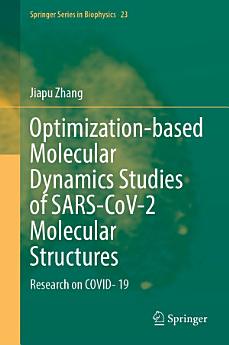Optimization-based Molecular Dynamics Studies of SARS-CoV-2 Molecular Structures: Research on COVID- 19
About this ebook
This book is particularly valuable for professionals working in practical computing roles within computational biochemistry, computational biophysics, optimization and molecular dynamics, structural bioinformatics, biological mathematics, and related fields. It serves as an accessible introduction to these disciplines and is also an excellent teaching resource for students.
About the author
Dr Jiapu Zhang received bachelor degree in 1993, first master degree in research in 1996, both from Qufu Normal University, P.R. China; second master degree in research in 2000 from National University of Singapore, Republic of Singapore; a PhD degree in 2005 from Federation University, Australia; and then a formal postdoctoral fellowship training from CSIRO (Commonwealth Scientific and Industrial Research Organisation), Australia.
Dr Zhang also received honors in Australia and worldwide for his prion research. In 2011, the report of MIT (Massachusetts Institute of Technology) Technology Review on his prion results caused worldwide impacts so that several organizations (e.g., the Physics Society of Iran) published his prion results in seven languages. NHMRC (National Health and Medical Research Council) of Australia has assigned him review tasks on prion projects. CSIRO once conferred him an award (together with Drs. Varghese JN and Epa VC) for rabbit prion protein research. He has been a reviewer for many top academic journals (e.g., Nature). All these made Dr. Zhang feel honored for his prion research.




